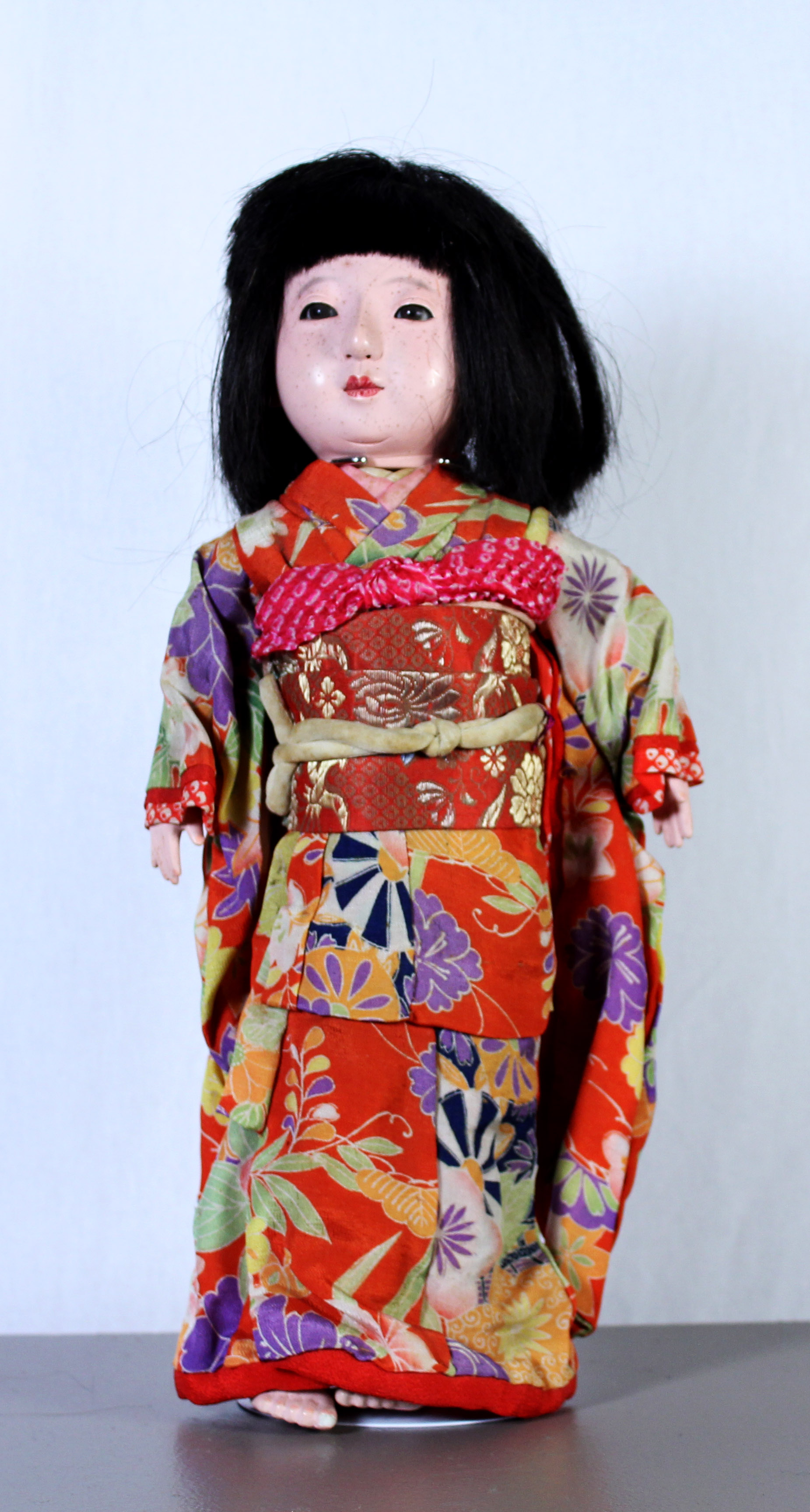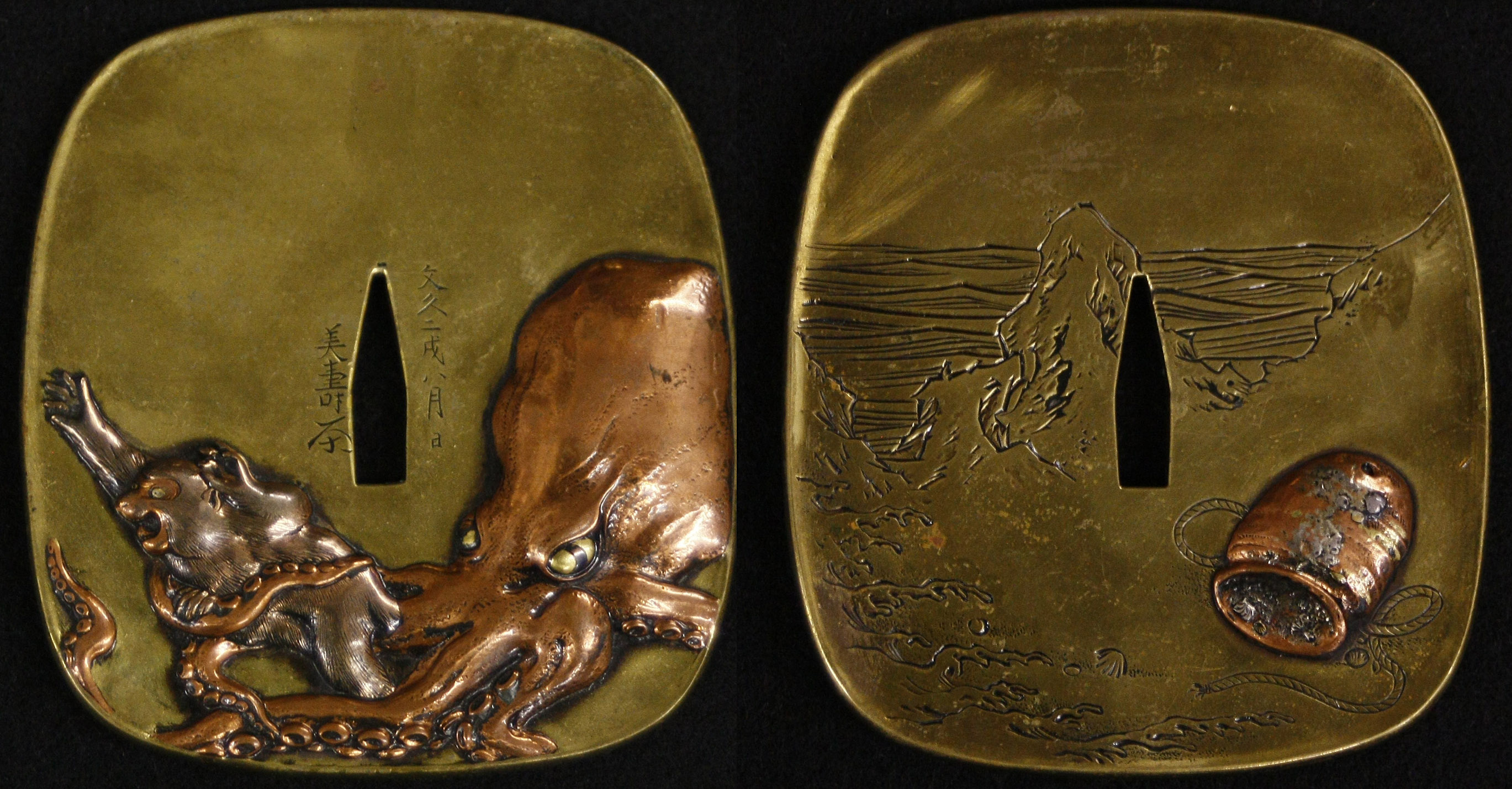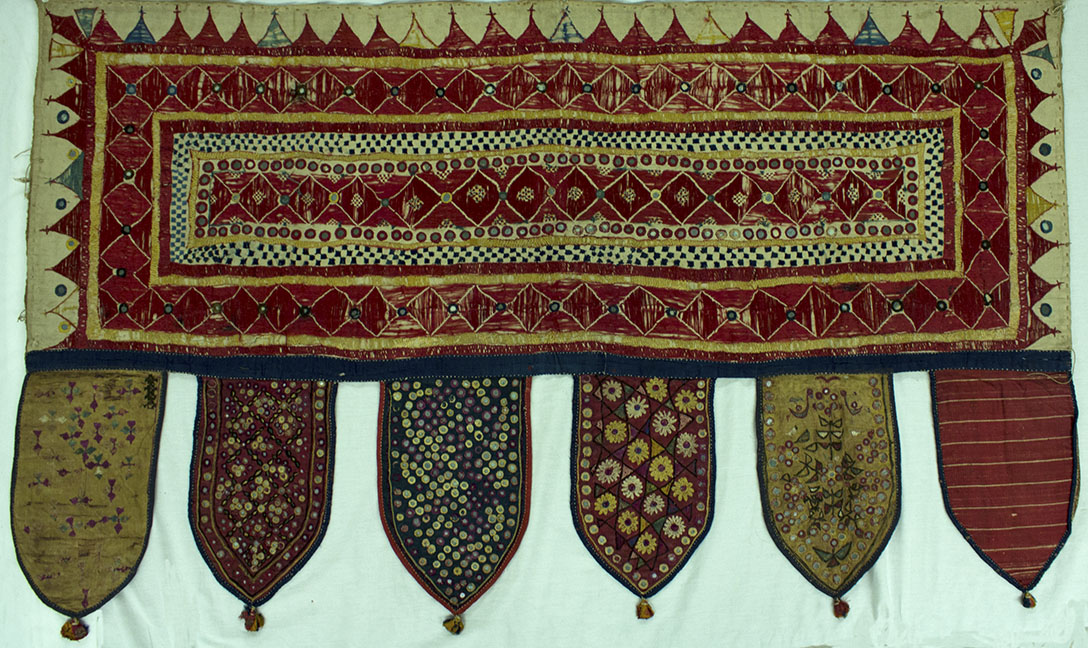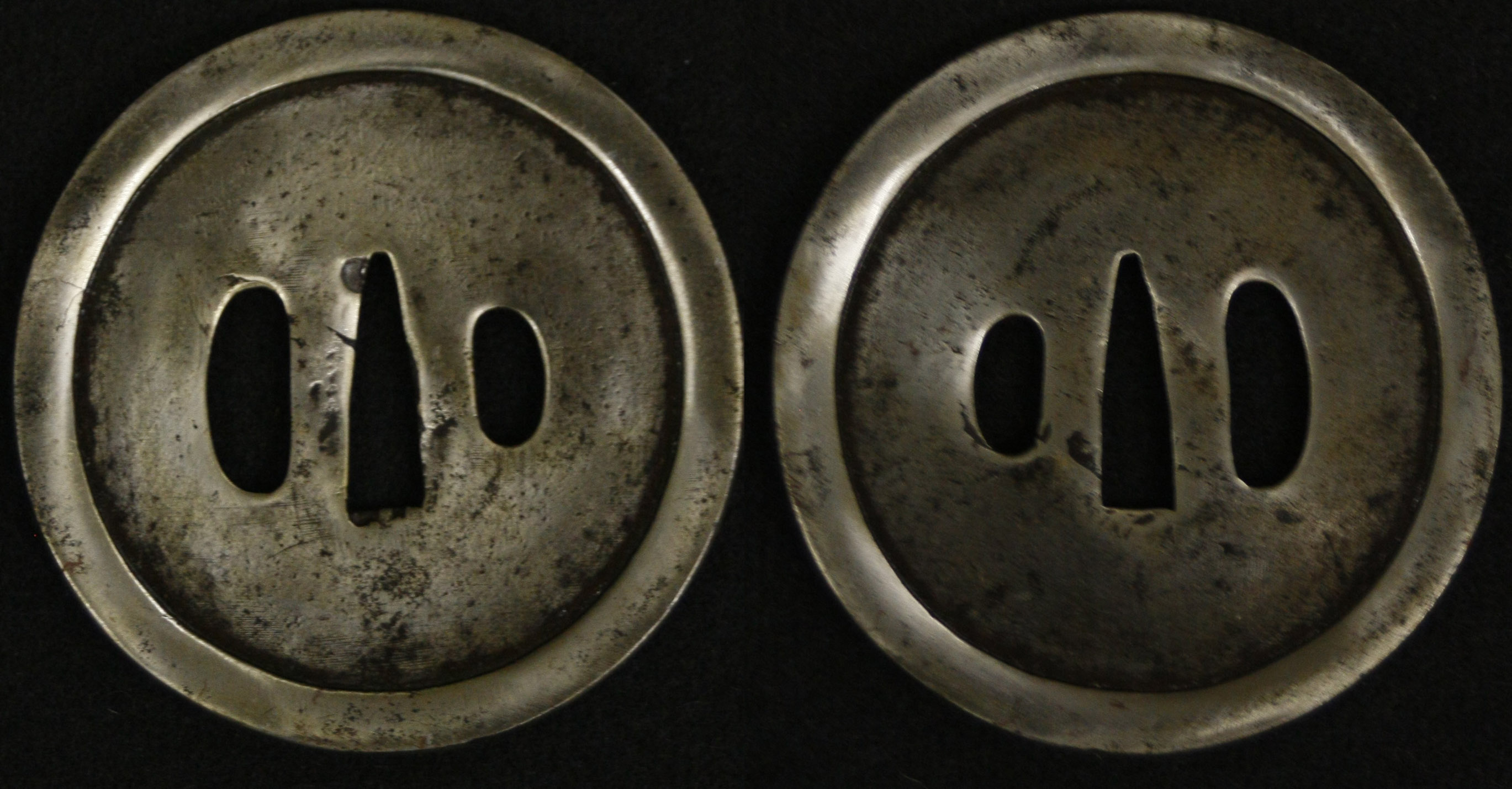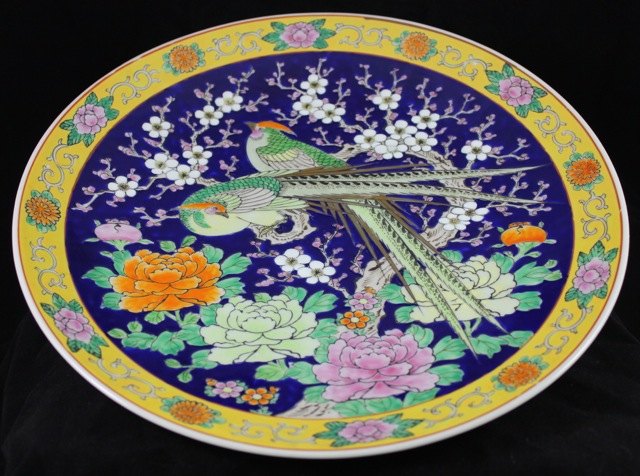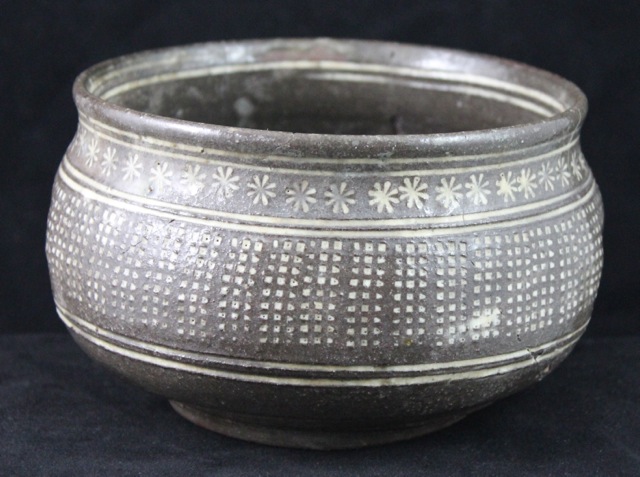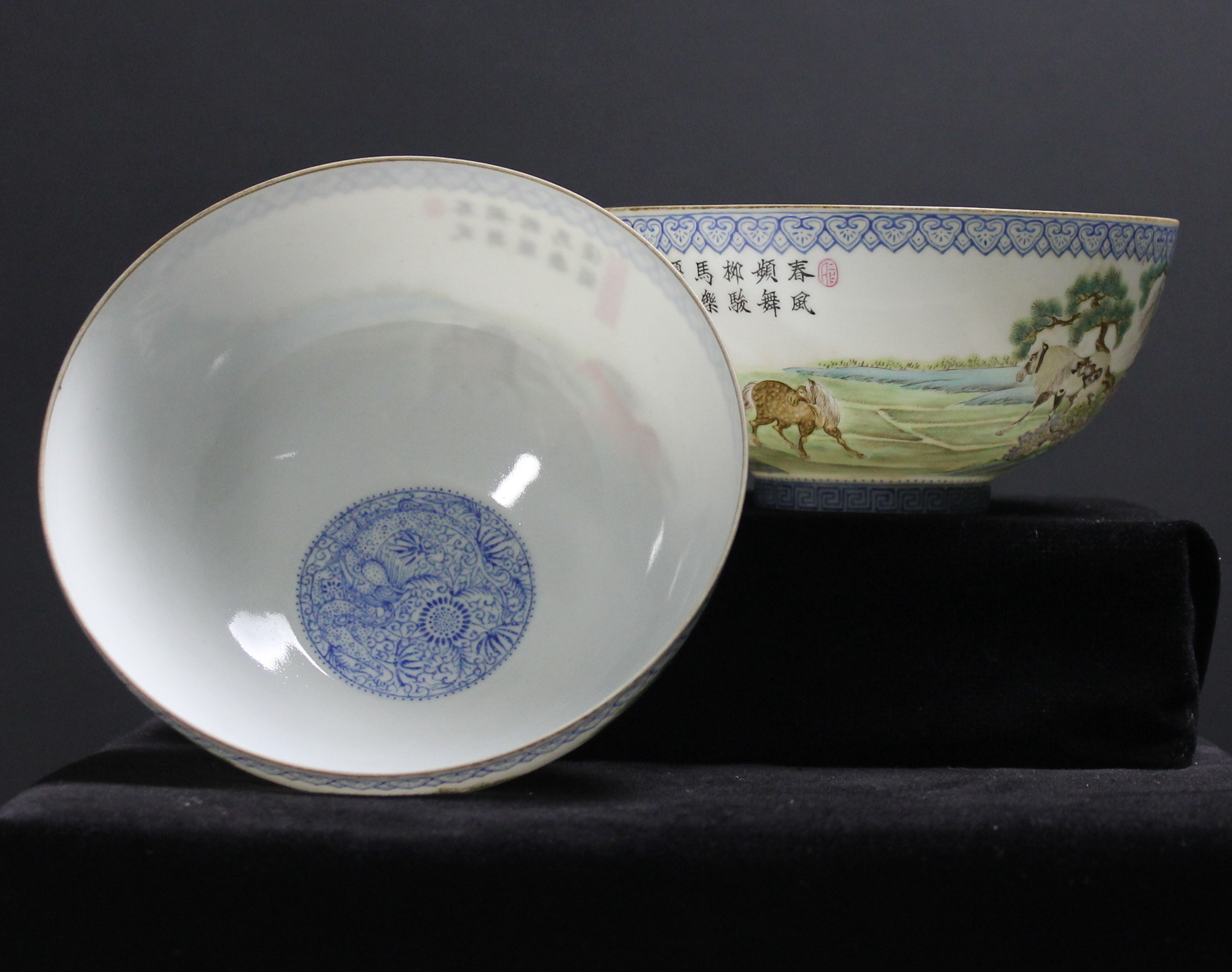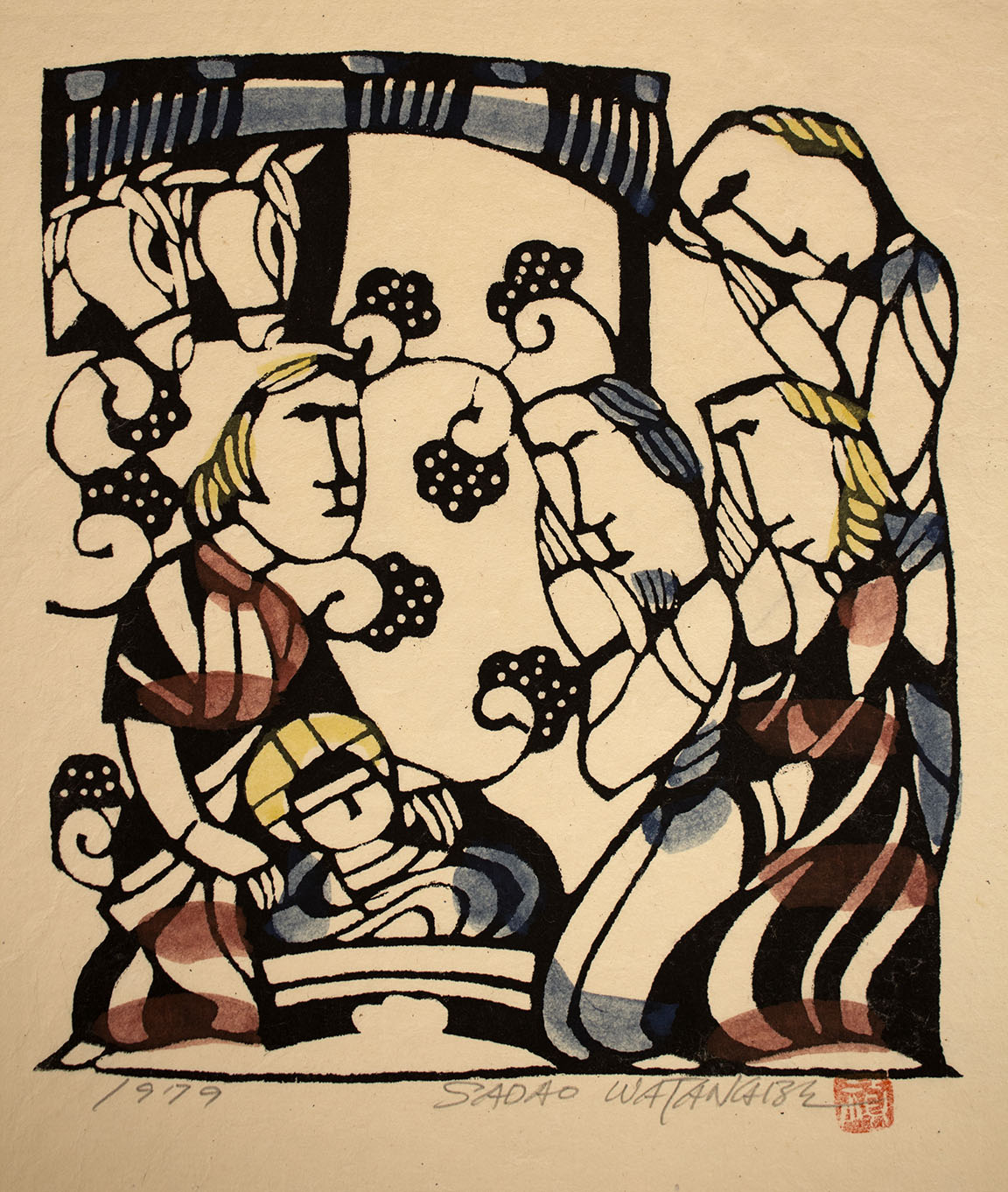Named after Sanogawa Ichimatsu, an 18th c. Kabuki actor who specialized in female roles, Ichimatsu dolls are an Edo era invention. They portray little Japanese girls and boys in their holiday silk kimonos and are sometimes commissioned by the rich as portraits of their children. The dolls are display objects, not toys, and are usually [...]
Tsuba of a Katana
Constantine Botimer2019-05-15T09:05:19-04:00A tsuba is the ring that separates the handle from the blade in traditional Japanese sword making. This tsuba is a great example of late Edo period metalwork. The Edo period was characterized by a united, isolationist Japan and a long era of peace. With the extended period of peace, tsubas reached previously unheard of [...]
Bowl
Constantine Botimer2019-05-15T09:05:19-04:00This piece of Dingware was manufactured in Dingzhou, Hebei Province at the height of the Northern Song Dynasty. Dingzhou was a ceramic capital of the Northern Song dynasty, and Dingware was highly prized for its elegance. Before the Song Dynasty Imperial court fled south, Dingware was the tableware for aristocratic families and the Imperial court. [...]
Toran
Susan Romer2019-05-15T09:05:19-04:00Toran is the Sanskrit name of a sacred or honorific gateway. Torans are used both personally, in homes, and sacredly in Buddhist and Hindu architecture. Its typical form is not fabric, as is shown here, but a wood or stone. Especially in Temple entrance ways, torans are sculptural post and lintel systems.This fabric toran was more [...]
Tsuba of a Katana, Long Sword
Berea College2019-05-15T09:05:19-04:00This sixteenth century steel tsuba was crafted for a katana, or what is commonly referred to as a samurai sword. The tsuba is of the Genshu Suruga style and very plain in its overall design. Each tsuba shape has its own name, the simple circular shape being known as Maru Gata. Katanas and other Japanese [...]
Teapot
Berea College2016-06-23T19:09:17-04:00This small nineteenth century teapot is decorated in a style that was developed in the Kyushu region following the sixteenth century Japanese invasion of Korea. With the relocation of skilled Korean potters to the Japanese isles, Satsuma ware developed as a style of Japanese pottery. Though it originally developed as utilitarian, with dark clay [...]
Arita Ware Plate
Berea College2016-06-23T19:00:56-04:00Framed by peonies and plum blossoms, two pheasants grace the center of this dish. The plate is vibrantly colored with rich shades of blue, pink, green, orange, yellow, gold, black, grey, and white. The scene depicted on the plate is heavily influenced by nature, specifically some of the flora and fauna local to the area. [...]
Tea Bowl, Korean Type
Berea College2016-06-23T19:52:51-04:00This tea bowl was created around 1850, by a Kyoto-based potter by the name of Lokuba. As the capital and seat of the Imperial Court in Japan for over 1000 years, Kyoto set the quality standard for arts and crafts. Artists who hail from this region are considered to be some of the best, and [...]
Painted Porcelain Bowls
Berea College2016-06-23T19:14:57-04:00This set of two painted porcelain bowls were created in the Jingdezhen province of China. These bowls feature a design of a Western dragon in blue glaze on the inside. The Western dragon is associated with anger and isolation, rather than strength and wisdom like its Eastern counterpart. The outside of the bowl is a [...]
Nativity
Berea College2016-07-26T19:38:23-04:00This woodblock print was created by Sadao Watanabe, a famous Japanese printmaker of the twentieth century. Watanabe is best known for his biblical productions made in the traditional Japanese style. The scene depicted here is of a nativity, with three men praying over a child being held by its mother. The print is primarily monochrome, [...]

